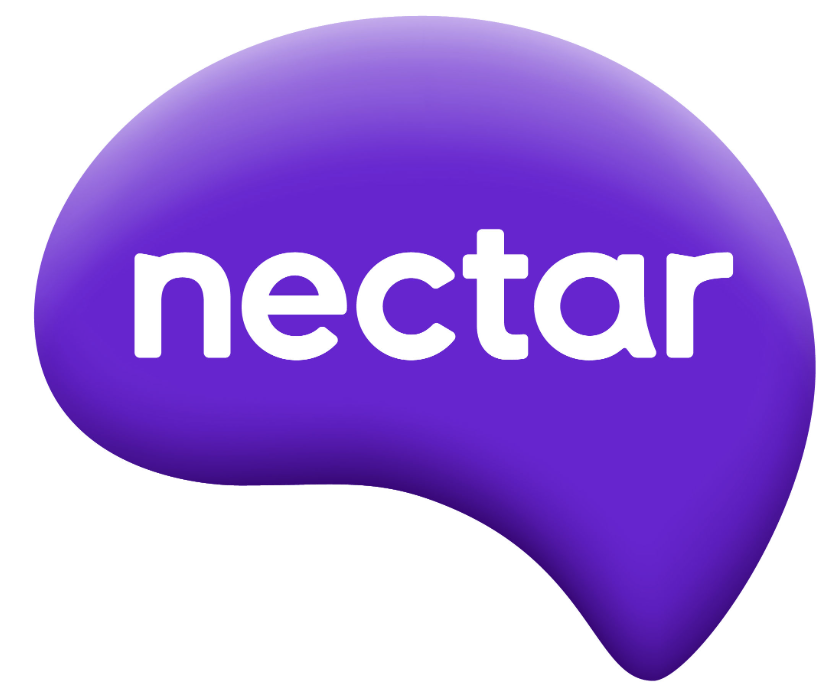Which Delta SkyMiles Credit Card is the Best? A Guide to Delta Credit Cards
Delta is one of the USA’s premier airline options for both domestic and international destinations
Are you a frequent traveler who loves to jet-set across either the domestic USA or the rest of the globe? If so, then you’re likely familiar with the excellent option that is Delta Air Lines. As one of the largest airlines in the world, Delta Air Lines offers a range of destinations from some of the biggest cities in the USA, such as Boston, Los Angeles, Austin, Denver, and more! As well, Delta is one of the few major airlines with flights to multiple different continents from the domestic USA.
Delta is also well known for its reward program, SkyMiles. While the SkyMiles program isn’t the most valuable of the various options out there (that title probably still goes to World of Hyatt or potentially United Airlines), it is extremely simple to use, especially for domestic economy flights.
Related: How to transfer American Express points to Delta SkyMiles
Besides flying on Delta, the best way to earn Delta SkyMiles and Delta status is through acquiring a Delta co-branded American Express credit card. These cards offer both spending rewards and travel benefits that can elevate your Delta experience, including lounge access, discounts on SkyMile award flights, and complimentary upgrades!
When it comes to Delta credit cards, there is a range of options available to cater to different lifestyles and travel preferences. Whether you are a budget-conscious traveler or a luxury jet setter, Delta has a credit card that suits your needs. However, with four different card options, it can be tough to decide which makes the most sense for you to add to your wallet. Luckily we’ve put together a list of recommendations for every circumstance to help you make this decision!
Let’s start our guide by exploring the details of different Delta co-branded AmEx credit cards.
The Delta SkyMiles Credit Cards
Delta SkyMiles Blue American Express Card
The Delta Blue AmEx card is the entry-level member of the Delta card quadfecta. This card is the simplest of the four options, with very few major benefits but no annual fee. Let’s start by going over the basics of the Delta Blue card:
Annual Fee: $0
Sign-on Bonus: 10,000 SkyMiles after you spend $1,000 in 6 months
Spending Rewards: 2x Miles on Delta purchases, restaurants worldwide, and 1x Miles on everything else
Benefits: 20% back on in-flight Delta purchases
The Delta Blue is a beginner card by all the metrics we look at. As a cardholder, you’ll get extremely limited benefits, with a slight increase in Delta SkyMiles earnings, 20% back on in-flight purchases, and a tiny sign-on bonus. If you’re unfamiliar with SkyMiles, it’s important to know that 10,000 Miles will probably not get you any flights longer than an hour. Therefore, the Delta Blue card is not the option for anyone hoping to earn enough Miles for free flights.
Compared to the other Delta cards, the Delta Blue is easily the least valuable of the set, even factoring in the lack of an annual fee. Frankly, the only reason you should pick up this card over the other options is if you absolutely will not pay annual fees. For everyone else, another card on this list will make more sense for you. There’s a reason that Delta consistently lists the Blue at the back of all their credit card lists!
Delta SkyMiles Gold American Express Card
The Delta Gold American Express card is the second option of the Delta set. Unlike the Delta Blue, the Gold is the first Delta card that actually gives flight-related benefits, such as a free checked bag and priority boarding.
Here are the basics of the Delta Gold card:
Annual Fee: $0 for the first year, then $99
Sign-on Bonus: Earn 40,000 SkyMiles after spending $2,000 in 6 months
Spending Rewards: 2x Miles on Delta purchases, restaurants worldwide, and groceries; 1x Miles on everything else
Benefits: Free first checked bag, priority boarding (main cabin 1), $100 flight credit after you spend $10,000 on the card annually, save 15% on award travel with SkyMiles
Compared to the Blue, the Delta Gold is better across almost every metric. It has four times the sign-on bonus for only double the spending (and 40,000 points is enough for many domestic round-trip flights in main cabin), bonus points on groceries, free checked bag/priority boarding, and bonus savings on award flights.
As well, for the first year, this card has no annual fee. It’s hard to understate how useful this fee postponement is to cardholders; not only does it allow you to trial the card for a full year to see if it’s worth holding, but also that every extra mile and flight benefit you gain in that first year is practically free. And if you don’t like the card, you can cancel or downgrade it after the end of your first year to avoid paying the annual fee!
However, even if you keep the card after the first year, it’s relatively easy to offset the annual fee with benefits. If you take two international flights in a year on Delta (or multiple domestic flights), you will make up the annual fee from the free checked bags alone! This doesn’t even touch on the bonus miles you’ll earn, the benefit of priority boarding, award travel savings, or the flight credit if you spend more than $10,000 on the card.
Overall, the Gold is the best Delta credit card for anyone who flies Delta casually and wants to have added travel benefits without paying an expensive annual fee. While this card certainly isn’t a luxury option, it’s a great staple for improving your travel on Delta, and is the best option of the bunch for anyone chasing sign-up bonuses!
Delta SkyMiles Platinum American Express Card
The third card in the Delta-branded AmEx line is the Delta Platinum. Not to be confused with the American Express Platinum, the Delta Platinum is one of Delta’s most popular cards as it comes with both Delta benefits and travel spending rewards. Unlike the Delta Blue and Gold cards, the Delta Platinum also comes with benefits for those hoping to earn Delta frequent flier status. Even with all of the changes to the Delta SkyMiles program, the Delta Platinum card remains a good option for earning MQDs (i.e., Delta status from 2024 onwards).
Annual Fee: $250
Sign-on Bonus: 50,000 SkyMiles after spending $3,000 on the card in 6 months
Spending Rewards: 3x Miles on Delta purchases (including flights) and hotels; 2x Miles on dining and groceries, 1x Miles on everything else
Benefits: Start with $2,500 MQDs and earn $1 MQD for every $20 spent, Delta Sky Club access (for $50), free checked bag, $100 TSA-Precheck/Global Entry credit, annual main-cabin companion certificate, 20% back on in-flight purchases,
The Delta Platinum is a major step up from the Delta Gold in terms of both annual fee and benefits. While the Platinum costs $151 more than the Gold, you get an extra mile on all Delta purchases, extra miles on hotels, and a headstart on status. While the sign-on bonus is a bit disappointing for the annual fee, the improved spending rewards compared to the Gold can result in you earning substantially more SkyMiles overall.
For those hoping that a card can single-handedly earn status, you may be slightly disappointed with the Platinum, as it will only get you exactly halfway to Silver status. Without being a frequent flier, the Platinum is not enough to elevate you to any notable levels of status. You’ll need to put large sums on the card to earn further status without being a frequent flier, as with 1 MQD for every $20, you’ll need to spend $50,000 in a calendar year on the card to earn Silver status and $150,000 to earn Gold status. Those are large chunks of cash for minimal return.
Overall, Delta set up the Platinum to be a true travel card. With (paid) lounge access, bonus miles on both Delta flights, hotels, and food, the Delta Platinum is designed to reward Delta frequent fliers with added benefits across the whole travel experience. However, with lounge access being paid and the poor rate of MQDs to $, this isn’t the card for those chasing Delta benefits and status.
Delta SkyMiles Reserve American Express Card
The top-tier Delta credit card is the Delta Reserve AmEx card. With the highest annual fee and most useful benefits of the Delta set, the Reserve is for those who are committed to Delta and want the greatest possible number of Delta-focused rewards.
Annual Fee: $550
Sign-on Bonus: 60,000 SkyMiles after spending $5,000 in 6 months
Spending Rewards: 3x Miles on Delta purchases, 1x Miles on everything else
Benefits: Start with $2,500 MQDs and earn $1 MQD for every $10 spent, free checked bag, priority boarding, complimentary upgrades (upon availability), 15% discount on award travel, complimentary Delta Sky Club access, First Class/Delta Comfort+/main cabin round-trip companion certificate, TSA-Precheck/Global Entry fee credit
The Delta Reserve is the premier option for anyone who wants to maximize their Delta status and benefits. With a plethora of notable benefits, such as a first-class round-trip companion certificate, free SkyClub access, and improved status earning, the Reserve is a high-fee high-reward card for those who want to commit (or have already committed) to flying on Delta.
However, there are things we don’t like about this card—mainly, that you start with just $2500 MQDs despite paying a whopping $550. It’s not that this is an unreasonable MQD advance, but getting the same number of MQDs that you would get for holding the Delta Platinum (a card that’s $300 cheaper) is extremely frustrating. Granted, you’re getting $1 MQD for every $10 spent as opposed to $20 with the Platinum, but it still means you’d have to spend $25,000 on the card for Silver status and $75,000 for Gold status. That’s a lot of money on top of an expensive card.
As well, there’s no way around it; the current sign-on bonus is poor for how expensive the card is. While this is still the largest sign-on bonus of any Delta card, you could be getting the AmEx Platinum for just slightly more money and getting 80,000 AmEx points (which can be transferred to Delta at almost 1:1).
One caveat to this—Delta often does promos where they increase the sign-on bonuses temporarily, so make sure to keep an eye out for those before applying for any of these cards!
Finally, it’s important to make one key distinction: the Delta Reserve is not a good everyday spending card. With the only source of spending rewards being Delta flights, this card is designed to be used for Delta flights and Delta-related benefits, not groceries or hotels.
Which Delta American Express card is the best option for you?
Now that we’re familiar with the four Delta card options, how do you figure out which one is the best option for you? Luckily, almost every individual can be split into one of three distinct groups, and we’ve provided a clear recommendation below for each.
Trying to quickly maximize SkyMiles, chasing a sign-on/welcome bonus, or don’t want to commit exclusively to Delta?
Get the Delta Gold. The Gold offers 40,000 points for just $2,000 in 6 months with no annual fee. Not only is this by far the best return for spend of the Delta card, but the lack of any annual fee in the first year also means that the Miles you earn are effectively cheaper. As well, with the low annual fee, there isn’t a ton of pressure to always fly on Delta, helping with the flexibility of your travel
However, if you aren’t set on jumping into the Delta ecosystem, we also recommend looking at the American Express Gold, which has inherently more valuable points and often has a better sign-on bonus. As well, always keep an eye out for special bonus welcome offers, as Delta is known for frequently offering increased sign-up bonuses through promotional links and physical mailers!
Becoming a Delta frequent flier, or trying to max out Delta benefits and rewards?
Get the Delta Reserve. The Reserve is the clear winner for providing the best possible Delta-related advantages. This card is helpful for both earning Delta status (though you’ll still need to fly Delta frequently to get any consistent status) and getting complimentary upgrades. However, the free lounge visits are what sets this apart from the Platinum, and is why we recommend anyone looking for the full Delta experience to commit to the Reserve as one of their primary cards.
Looking for an all-around travel card that earns SkyMiles?
Get the Delta Platinum. While the Reserve may be better for earning status, the Platinum is the option that offers the best rewards for your travel spending with bonus points on Delta flights, hotels, and groceries/dining. Compared to the Reserve and the Gold, the Platinum is the best option for general travel expenses.
You may have noticed that we didn’t recommend the Delta Blue for any groups; this is intentional. The Blue is essentially a worse version of the Gold and while technically the annual fee is lower after the first year, if you’re not willing to pay $99 a year for a Delta card, it probably is not worth getting one in the first place. If that’s the case, consider getting the Chase Sapphire Preferred instead for more general travel benefits.
We hope this article helped inform your decision between the four different Delta American Express credit cards! If there are any other groups we forgot or questions about why we gave the recommendations we did, make sure to leave a comment below!










